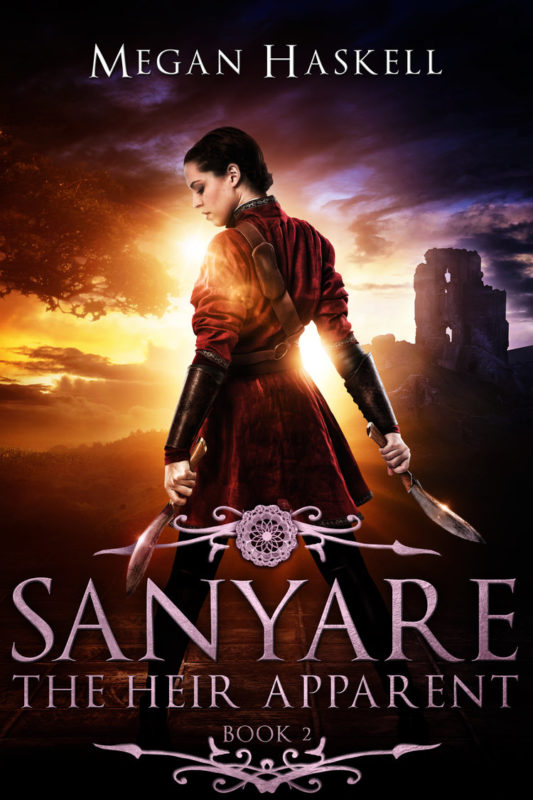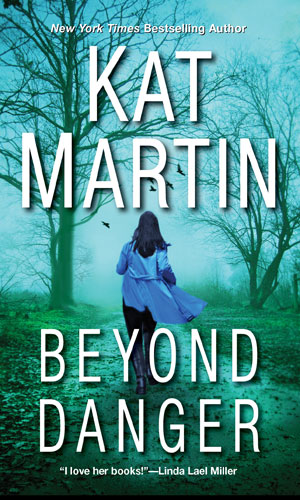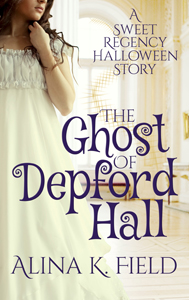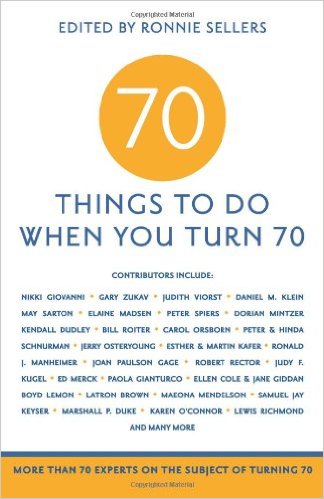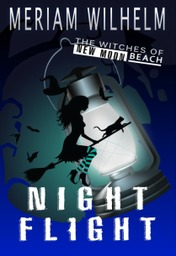Find Motivation to Accomplish Goals, and Hang On To It
July 12, 2020 by Denise M. Colby in category The Writing Journey by Denise Colby tagged as Denise M. Colby, Motivation, Writing GoalsThere are just some days I find it really hard to sit down and work on my manuscript. But, I have goals to reach. And somewhere, somehow, I have to find motivation to accomplish those goals. Otherwise I get frustrated and want to give up.

Writing a book is a longggg process. I’ve been working on mine for over seven years. Granted, I have a day job. I have a family. And I have volunteer requirements. And in the beginning I had no idea what I was doing and didn’t know what were realistic measurements or tasks I could expect myself to accomplish.
But I’ve learned a lot in the past seven years, including what works for me to keep moving forward.
Here’s how I motivate myself to accomplish goals:
Break up tasks into manageable chunks.

Choose to track word counts or time. Sometimes just spending 15 minutes (Flylady anyone?) is enough to move forward and keep my mind in my story. My planner I use has little images in the front of each month. If I touched my MS that day, I color in the image. Didn’t matter how long or what I did. It sure helps take away the feeling of being stagnant.
Write out specific tasks that can be checked off.

Back in March when all of sudden my home became work and school central for the four other people in my family, I had to get really specific with the tasks I wanted to accomplish each week. Part of that was to show my family what I was working on, and part of it was for me to stay on task when there was a lot going on around me.
I was editing my MS and wanted to get through four chapters a week. So on an index card, I wrote out each week’s dates and which chapter numbers were assigned that week, and then I stuck it to my little bulletin board, where I could see it.
I’ll tell you, being able to check off each week when I accomplished those chapters was so encouraging. Yes, I will need to go through my MS again. But I’m not focusing that far ahead. I would derail myself if I did. Instead I focused on what I needed to accomplish that day (one scene or two) for that week. This makes it way more manageable.
And for full disclosure, I had to change some of the dates. There were a few weeks where I just couldn’t get it done. The chapters needed more work, and we had family birthdays to celebrate. So I adjusted and kept going.
Figure out time blocks that work for you.

Are you a morning person or a night person? I’ve learned that editing in the afternoon right now doesn’t work for me. I get too caught up with work and everyone else is up and making noise, having conversations, and it’s challenging to focus uninterrupted. I enjoy the morning when it’s more quiet.
Although with 7 and 7:30am conference call meetings recently, I don’t get to start my day working on my MS, before I jump into work. I try, but realize that it’s not realistic five days a week. Instead, for now, I’ve adjusted my hours and try to work only 1/2 day on Friday and then work on my MS the rest of the day.
This has given me momentum heading into the weekend to still accomplish goals. Sometimes our family dynamics make it hard to work on things all weekend, but by telling my husband I need some time to work on my book, it’s helped set up the expectation.
Take a moment to catch your breath.

I find when life is crazy busy, I can’t slow down to focus on just one task. Too many things are screaming at me to get it all done, NOW. In my handy dayplanner each week, are two pages of daily inspiration. Some days I can only think of writing one word in the daily square – my word of the year. This year it’s courage and writing it out reminds me why I chose that word. Courage to keep going when it’s hard, courage to take risks, courage to trust God’s plan for my writing.
Other days I write other things in the daily spots, whether it’s a Bible verse, quote, thoughts, or recently I’ve been focusing on 5 things I’m grateful for each day. It’s amazing how taking a few minutes to slow down and pause helps my mental state and allows me to refocus my brain on the next task I’m preparing for. (And I’ll admit, some days it’s toward the end of the day and I hadn’t written anything down yet. I still pick it up then and recenter myself).
Sometimes I need to just create without thinking. With Washi tape I add color and design to my planner pages. Maybe not everyone is like this, but I find it really helps center me and I get to see something for my efforts.
Find something that causes excitement.

I’m teaching an online course this month through ACFW on SEO Marketing. I love this topic. And so many people have responded to participate. As I reply to each one and read their comments of what they wanted to learn and their answers, I’ve gotten really excited. I get to share this topic with other writers, help them, and make a difference. With each email, I’m more motivated to keep doing what I’m doing.
There’s something to be said about having little wins in your corner that can help motivate. Interacting, helping and teaching other writers seem to be one of mine.

I could keep going, but I’m off to participate in a virtual writing conference. It seems talking and sharing with other writers is another motivator for me.
I hope one of these ideas helps encourage you to accomplish goals in your writing. When I set out to decide on my topic for this month, this one came to mind. I wanted to capture the positive energy that I’m feeling right now, so in those times when I don’t feel it, I can remind myself of what I can do to help myself through the more challenging times.
If you have other ways to motivate yourself to accomplish goals, I’d love to hear it. Write it in the comments below. We can all use new ideas to help motivate us to accomplish our goals!
Blessings,
Denise
If you are interested in more, I wrote a post in January for this blog, that talked about staying on task. And over at my own blog, I post monthly on various topics related to encouragement, writing, and anything Disney
0 0 Read moreWhen a writer needs a hug… by Jina Bacarr
July 11, 2020 by Jina Bacarr in category Jina’s Book Chat, Writing tagged as books, editing, historical, Paris, writing, WW 2
Writing never gets easier… if anything, it’s more difficult.
Why? Because we expect more of ourselves. Even more so when you’re doing edits from your fab editor who’s really an angel in disguise. We want to make our story as perfect as possible and not disappoint her. She believes in you. Your characters believe in you. After all, their lives are in your hands.
But like a chocolate soufflé, a lot can go wrong.
Your computer screen goes blue… computer updates send your heart pounding as you pray you get all your pretty icons back…. a character keeps you up at nights because you’re so worried about how you’re going to save her butt and yours.
There’s more:
You go over your word count.
You can’t find your timeline/fact sheet for your heroine (when you’re writing about Paris during WW 2 this is crucial).
You ‘re so tired, you push the wrong button on your keyboard and everything in Track Changes disappears
You realize a secondary relationship ain’t working because the hero is based on an old boyfriend with a big ego. You dump him. Get a new guy for the part. And he’s an absolute dream.
You work from dawn-to-dawn the week before edits are due and have no idea what day it is.
And worst of all, you run out of coffee.
But I did it!
I sent my editor the edited manuscript at 7:37 a.m. on a sunny morning… and I felt numb. No whistles went off. No bells. Just the quiet hum of my computer.
I needed a hug.
Someone telling me ‘I done good’.
Yes, I’m totally proud of what I accomplished, but writing can be a lonely business. And it’s hard work, especially writing historicals. (My story follows a dual timeline from 1926 to 1950 and present day. Silent films, Nazis in Paris, the film business in Hollywood and France.)
So I did what I swore I wouldn’t after I sent the m/s: I opened it back up and read some of my favorite passages. Laughed and cried again with my characters… sat amazed at how they accomplished their goals… fell in love with them all over again… and cheered when they beat the Nazis!
And I got that hug.
From my characters. Reminding me why I write. Because I so love them, the stories, the chance to give them life.
So, merci beaucoup, mes bons amis! Thank you, my friends.
Jina
PS — I’ll keep you posted on my Paris WW 2 historical. Cover ideas coming soon…
4 0 Read moreWriting with Hollywood in Mind by Kitty Bucholtz
July 10, 2020 by Kitty Bucholtz in category It's Worth It by Kitty Bucholtz, Writing tagged as conferences, Hollywood, Kitty Bucholtz, learning, One-day Workshop, Online Classes, TeachingMy original plan this year before the pandemic was to host a live writers conference here in Malmö, Sweden, in October. I had speakers and everything all lined up – and then I had to cancel it all, of course.
But my main speaker, Jennifer Dornbush, was still excited to do some teaching with me, so we made a pivot in our plans and decided to host a 1-day virtual writers conference called Writing with Hollywood in Mind on July 25, 2020. To give people a taste of what the conference will be like, we are hosting two free webinars of the same name. The next one is Saturday, July 18. Click the link – I’d love to see you there!

HOW TO FINISH YOUR BOOK. . .AND KEEP YOUR DAY JOB
July 3, 2020 by Janet Elizabeth Lynn and Will Zeilinger in category Partners in Crime by Janet Elizabeth Lynn & Will Zeilinger tagged as Craft, time management, writing craft
Writing a book is a work of love. However, things get in the way, i.e. work. We all dream of the day when we can make enough money to survive by writing. Until that day comes (if it ever does), we need to keep our full time jobs. We wrote and published our first five books working full time.
When do you write? This is a common question people always ask us. And it all comes down to time management and what you can do working around your family and work schedule.
Both of us use to go into work 1-2 hours early each morning just to write. We brought our lap tops and clicked away until it was time to start work. Egg timers are great for working an hour at a time. Don’t forget to bring your breakfast. Some people prefer to stay later at work which may work better for you. Be sure to plan at least an hour or more at a time.
Look for gaps in your day, including breaks, waiting for the mail, or meetings. Basically anytime you may have a few minutes, i.e., typing, or writing a note for characterization, dialogue or sub plot in a writing notebook, on a napkin/piece or scrap paper/paper towel and pocket it. You never know when inspiration will hit. Nothing is more frustrating than coming up with a fantastic idea, telling yourself you’ll remember and when it comes down to writing…forgetting.
Keep up the good writing.
Published authors Will Zeilinger and Janet Lynn had been writing individually until they got together and wrote the Skylar Drake Mystery Series. These hard-boiled tales are based in old Hollywood of 1955. Janet has published seven mystery novels, and Will has three plus a couple of short stories. Their world travels have sparked several ideas for murder and crime stories. This creative couple is married and lives in Southern California.
0 0 Read moreAuthor Larry L. Deibert – a Time Traveling man!
July 2, 2020 by Jann Ryan in category Jann says . . ., Writing tagged as Author Interviews, Dogs!, Larry L. Deibert, Vietnam Larry Deibert has written fourteen books: Combat Boots dainty feet-Finding Love In Vietnam, The Christmas City Vampire, The Other Side Of The Ridge-Gettysburg, June 27th, 2013 to July 2nd, 1863, Family, Fathoms, From Darkness To Light, The Life Of Riley, Santa’s Day Jobs, Werewolves In The Christmas City, The Christmas City Angel, Witches Werewolves And Walter, The Other Side Of The Ridge, New York 1930, The Other Side Of The Ridge, New York City, September 10th and 11th, 2001, and A Christmas City Christmas, all published by Kindle Direct Publishing https://kdp.amazon.com/en_US/
Larry Deibert has written fourteen books: Combat Boots dainty feet-Finding Love In Vietnam, The Christmas City Vampire, The Other Side Of The Ridge-Gettysburg, June 27th, 2013 to July 2nd, 1863, Family, Fathoms, From Darkness To Light, The Life Of Riley, Santa’s Day Jobs, Werewolves In The Christmas City, The Christmas City Angel, Witches Werewolves And Walter, The Other Side Of The Ridge, New York 1930, The Other Side Of The Ridge, New York City, September 10th and 11th, 2001, and A Christmas City Christmas, all published by Kindle Direct Publishing https://kdp.amazon.com/en_US/
He is a Vietnam veteran and is the past president of the Lehigh Northampton Vietnam Veterans Memorial in Macungie, Pa. Larry retired from the U.S. Postal Service in 2008 after working as a letter carrier for over 21 years. He and his wife, Peggy, live in Hellertown, Pa., where he enjoys reading and writing.
Larry’s website is, www.larryldeibert.com.
You can contact Larry at larrydeibert@rcn.com. Signed copies may be purchased directly from the author.
We’re here today with Author Larry L. Deibert to talk about his Time Travel Trilogy, so let’s get started.
Jann: What is the premise of your Time Travel Trilogy, The Other Side Of The Ridge?
Larry: Initially I was only going to write one novella with the premise of a black man being captured by Confederates in 1863, but when I finished the book, I thought I had to have him move on and hopefully someday return to 2013.
Jann: Did you encounter any unique challenges when writing this Trilogy?
Larry: Yes, a writer friend of mine told me that I could not use two methods of time travel in the same story because it was against the rules. Time travel offers a great many challenges, and I had to do more research than usual to make sure I had things right.
Jann: Your main character, Dan Rodin, has some great adventures throughout this Series. What challenges does he have to overcome? Who is Dan Rodin?
Larry: Dan Rodin is a black retired Brigadier General in the United States Army and he is a Vietnam veteran. He has to adapt to the time periods he is sent to and in the first novella, he has to endure the taunts, physically and verbally about the color of his skin. He has to do his best to not make any changes to the historical time-line.
Jann: What has been the most rewarding part of having written this Trilogy?
Larry: I think being able to guide characters from 2013 to 1863 and then 1930 and 2001, and finally back to 2013 was extremely rewarding. I learned a lot about these times in the past and how 21st century characters could live and work in different eras.
Jann: Is Time Travel your favorite genre?
Larry: One of my favorites, along with horror and paranormal. Those genres just open up so many ideas and ways to scare my readers.
Jann:. What are you working on now? Can you tell us about your next project?
Larry: I’m getting ready to publish my third book in the trilogy, The Other Side Of The Ridge, New York City, September 10th and 11th, 2001. I finally got a copy of Requiem For A Vampire from my daughter, not having been able to find the manuscript disc. Now I have the challenge of looking at the book as I retype the novel. I wrote it 21 years ago and I was never completely happy with the characters and the story. I also am working on many short stories, both old and new and I want to put them all in a book someday.
Side Of The Ridge, New York City, September 10th and 11th, 2001. I finally got a copy of Requiem For A Vampire from my daughter, not having been able to find the manuscript disc. Now I have the challenge of looking at the book as I retype the novel. I wrote it 21 years ago and I was never completely happy with the characters and the story. I also am working on many short stories, both old and new and I want to put them all in a book someday.
Jann: Do you find yourself returning to certain themes in your stories? What? Why?
Larry: In every book I always try to include a Vietnam veteran and my late dog, Riley. I served in Vietnam and I loved my dog to death, and obviously beyond.
Jann: Do you have any writing rituals? Schedule?
Larry: No, since I don’t earn a living writing, I just write when the mood strikes me.
Jann: What Kind of writer are you? A page a day or a burst writer?
Larry: I would have to say I am a burst writer.
Jann: Are there any words of inspiration on your computer, in your office or in your mind when you write?
Larry: Not really. When I was writing Requiem For A Vampire, my family and I were in old town Williamsburg, Va. I happened to see a young woman who resembled my vampire. I took her picture and hung it on the wall above my computer.
Jann: What’s the best writing advice you ever received.? What’s the worst?
Larry: Keep writing; Quit writing.
Jann: Have you ever suffered writer’s block? If so, how did/do you get past it?
Larry: Yes, I think many writers go through that from time to time. When I get it really bad, like I did with writing my novel, Family, I just go to something else, but I still think about where I am stuck until I get an idea. It took almost 5 years to finish Family. I have been working on a murder mystery for over two years, having been stuck for at least a year. I think I need to reread what I have written so far and maybe something will come to me.
Jann: How do you stay motivated? What drives you to keep writing?
Larry: Sometimes I don’t think I’m really motivated, but my drive is when I get a story idea, I need to see it through to conclusion.
Jann: What are you dying to try next?
Larry: I’m very excited about working on my short stories and rewriting Requiem. I have submitted a story to my writer’s group for the annual anthology and I am hoping to see it published. I have never been in an anthology before. I also want to write book 2 of Combat Boots dainty feet-Finding Love in Vietnam. Originally it was titled 95 Bravo and it is a story about the Military Police. Book 2 will focus on the 716th MP Battalion and how they helped save Saigon during the Tet Offensive in 1968. I’ve been working on it on and off for about five or six years.
Jann: What’s the best thing about being an author?
Larry: Taking an idea and creating characters and settings in which to have that idea grow into a believable story. Greeting readers at various book signings and having them share their thoughts about my books. Selling books to virtual strangers is also pretty cool.
Jann: Thank you so much Larry for spending this time with us and sharing your life as a writer.
Books by Larry L. Deibert

Larry Deibert is a Vietnam veteran and is the past president of the Lehigh Northampton Vietnam Veterans Memorial in Macungie, Pa.
He retired from the U.S. Postal Service in 2008 after working as a letter carrier for over 21 years. He and his wife, Peggy, live in Hellertown, Pa., where he enjoys reading and writing.
Larry has written fourteen books and is currently working on a collection of his many short stories.
Larry’s website is, www.larryldeibert.com.
You can contact Larry at larrydeibert@rcn.com.
Signed copies of Larry’s books may be purchased directly from the author.
Affiliate Links
A Slice of Orange is an affiliate with some of the booksellers listed on this website, including Barnes & Nobel, Books A Million, iBooks, Kobo, and Smashwords. This means A Slice of Orange may earn a small advertising fee from sales made through the links used on this website. There are reminders of these affiliate links on the pages for individual books.
Search A Slice of Orange
Find a Column
Archives
Featured Books
SANYARE: THE HEIR APPARENT
Her secret is unraveling. One dangerous quest could end it all...
More info →BEYOND DANGER
New York Times bestselling author Kat Martin brings page-turning suspense to a tale of secrets and passions turned deadly . . .
More info →70 THINGS TO DO WHEN YOU TURN 70
70 Things to Do When You Turn 70 celebrates the opportunities to have meaningful and fulfilling lives at 70 and beyond.
More info →NIGHT FLIGHT
Olivia Merriman’s witchy wiring has all gone haywire and if she doesn’t get it under control soon she’s going to lose her boyfriend, her magic and a whole lot more!
More info →Newsletter
Contributing Authors
Search A Slice of Orange
Find a Column
Archives
Authors in the Bookstore
- A. E. Decker
- A. J. Scudiere
- A.J. Sidransky
- Abby Collette
- Alanna Lucus
- Albert Marrin
- Alice Duncan
- Alina K. Field
- Alison Green Myers
- Andi Lawrencovna
- Andrew C Raiford
- Angela Pryce
- Aviva Vaughn
- Barbara Ankrum
- Bethlehem Writers Group, LLC
- Carol L. Wright
- Celeste Barclay
- Christina Alexandra
- Christopher D. Ochs
- Claire Davon
- Claire Naden
- Courtnee Turner Hoyle
- Courtney Annicchiarico
- D. Lieber
- Daniel V. Meier Jr.
- Debra Dixon
- Debra H. Goldstein
- Debra Holland
- Dee Ann Palmer
- Denise M. Colby
- Diane Benefiel
- Diane Sismour
- Dianna Sinovic
- DT Krippene
- E.B. Dawson
- Emilie Dallaire
- Emily Brightwell
- Emily PW Murphy
- Fae Rowen
- Faith L. Justice
- Frances Amati
- Geralyn Corcillo
- Glynnis Campbell
- Greg Jolley
- H. O. Charles
- Jaclyn Roché
- Jacqueline Diamond
- Janet Lynn and Will Zeilinger
- Jaya Mehta
- Jeff Baird
- Jenna Barwin
- Jenne Kern
- Jennifer D. Bokal
- Jennifer Lyon
- Jerome W. McFadden
- Jill Piscitello
- Jina Bacarr
- Jo A. Hiestand
- Jodi Bogert
- Jolina Petersheim
- Jonathan Maberry
- Joy Allyson
- Judy Duarte
- Justin Murphy
- Justine Davis
- Kat Martin
- Kidd Wadsworth
- Kitty Bucholtz
- Kristy Tate
- Larry Deibert
- Larry Hamilton
- Laura Drake
- Laurie Stevens
- Leslie Knowles
- Li-Ying Lundquist
- Linda Carroll-Bradd
- Linda Lappin
- Linda McLaughlin
- Linda O. Johnston
- Lisa Preston
- Lolo Paige
- Loran Holt
- Lynette M. Burrows
- Lyssa Kay Adams
- Madeline Ash
- Margarita Engle
- Marguerite Quantaine
- Marianne H. Donley
- Mary Castillo
- Maureen Klovers
- Megan Haskell
- Melanie Waterbury
- Melisa Rivero
- Melissa Chambers
- Melodie Winawer
- Meriam Wilhelm
- Mikel J. Wilson
- Mindy Neff
- Monica McCabe
- Nancy Brashear
- Neetu Malik
- Nikki Prince
- Once Upon Anthologies
- Paula Gail Benson
- Penny Reid
- Peter Barbour
- Priscilla Oliveras
- R. H. Kohno
- Rachel Hailey
- Ralph Hieb
- Ramcy Diek
- Ransom Stephens
- Rebecca Forster
- Renae Wrich
- Roxy Matthews
- Ryder Hunte Clancy
- Sally Paradysz
- Sheila Colón-Bagley
- Simone de Muñoz
- Sophie Barnes
- Susan Kaye Quinn
- Susan Lynn Meyer
- Susan Squires
- T. D. Fox
- Tara C. Allred
- Tara Lain
- Tari Lynn Jewett
- Terri Osburn
- Tracy Reed
- Vera Jane Cook
- Vicki Crum
- Writing Something Romantic
Affiliate Links
A Slice of Orange is an affiliate with some of the booksellers listed on this website, including Barnes & Nobel, Books A Million, iBooks, Kobo, and Smashwords. This means A Slice of Orange may earn a small advertising fee from sales made through the links used on this website. There are reminders of these affiliate links on the pages for individual books.


















